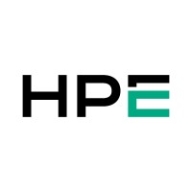

HPE ProLiant DL Servers and Oracle SPARC Servers compete in the enterprise server market. Based on comparative data, HPE ProLiant DL Servers hold an affordability and support advantage, whereas Oracle SPARC Servers lead in processing speed and security for data-intensive tasks.
Features: HPE ProLiant DL Servers are valued for scalability, energy efficiency, and compatibility with various operating systems. They offer advanced power management, customizable configurations, and remote server management with Integrated Lights-Out (iLO). Oracle SPARC Servers emphasize top-tier security, rapid data handling, and processing power tailored for intensive database operations, showcasing a seamless synergy with Oracle Database functionalities.
Room for Improvement: HPE ProLiant DL Servers could enhance integration simplicity and ease of management for large-scale deployments. Additionally, increasing automation in management tools and expanding hardware compatibility can provide further benefits. Oracle SPARC Servers may focus on reducing setup complexity, improving cost-effectiveness, and expanding third-party software compatibility to broaden their appeal in diverse IT environments.
Ease of Deployment and Customer Service: HPE ProLiant DL Servers offer a user-friendly setup with extensive support, facilitating rapid deployment and minimizing downtime through a reliable service network. Oracle SPARC Servers provide specialized support with in-depth technical assistance, catering to complex environments needing ongoing optimization, albeit with a more involved installation process.
Pricing and ROI: HPE ProLiant DL Servers provide competitive upfront pricing and strong ROI, attributed to their energy efficiency and operational agility. Oracle SPARC Servers, with a higher initial investment, justify their cost through superior processing capabilities and extended hardware lifespan, critical for mission-critical tasks that demand top performance endurance.
| Product | Market Share (%) |
|---|---|
| HPE ProLiant DL Servers | 20.9% |
| Oracle SPARC Servers | 3.7% |
| Other | 75.4% |


| Company Size | Count |
|---|---|
| Small Business | 55 |
| Midsize Enterprise | 28 |
| Large Enterprise | 98 |
| Company Size | Count |
|---|---|
| Small Business | 4 |
| Midsize Enterprise | 2 |
| Large Enterprise | 1 |
HPE ProLiant DL Servers are known for their reliability, scalability, and robust performance. They deliver advanced management capabilities and excel in handling high workloads, offering cost efficiency and versatile customization options suited for diverse enterprise needs.
HPE ProLiant DL Servers feature a user-friendly design that facilitates quick deployment and efficient maintenance. Their advanced iLO technology supports remote management, allowing users to handle server operations efficiently. Users appreciate the system's compatibility with multiple applications and infrastructures, along with robust support services. Despite these strengths, some models have issues like missing front ports, slow boot times, and a reliance on Java for management tasks. Suggestions for improvement include enhanced power monitoring, refined software, better redundancy, and energy-efficient operation. Many look for improved virtualization capabilities and faster processors. Support and documentation inconsistencies are also noted concerns.
What are the key features of HPE ProLiant DL Servers?HPE ProLiant DL Servers are widely implemented in enterprise and educational settings, excelling in virtualization on VMware and Hyper-V platforms. They support databases like Oracle and MongoDB and are essential for high-performance computing and AI projects. These servers are integrated into system environments, supporting rack and hyperconversion setups effectively.
Oracle's SPARC S7, T7, and M7 Servers with always-on memory intrusion protection and comprehensive data encryption secure data with no performance penalty. Security in silicon features and Oracle Solaris protect data in memory from unauthorized access and stop malware before it gets in.
We monitor all Rack Servers reviews to prevent fraudulent reviews and keep review quality high. We do not post reviews by company employees or direct competitors. We validate each review for authenticity via cross-reference with LinkedIn, and personal follow-up with the reviewer when necessary.